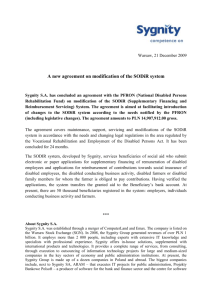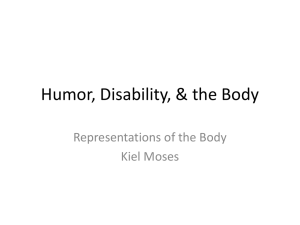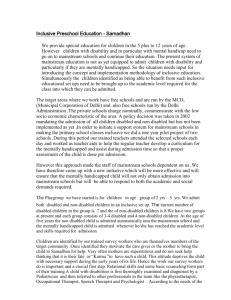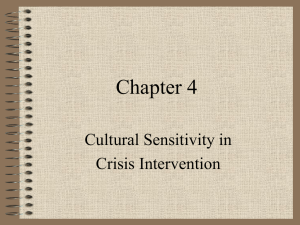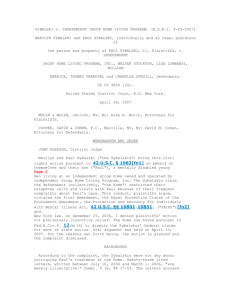Building Bridges to the Disabled Community
advertisement
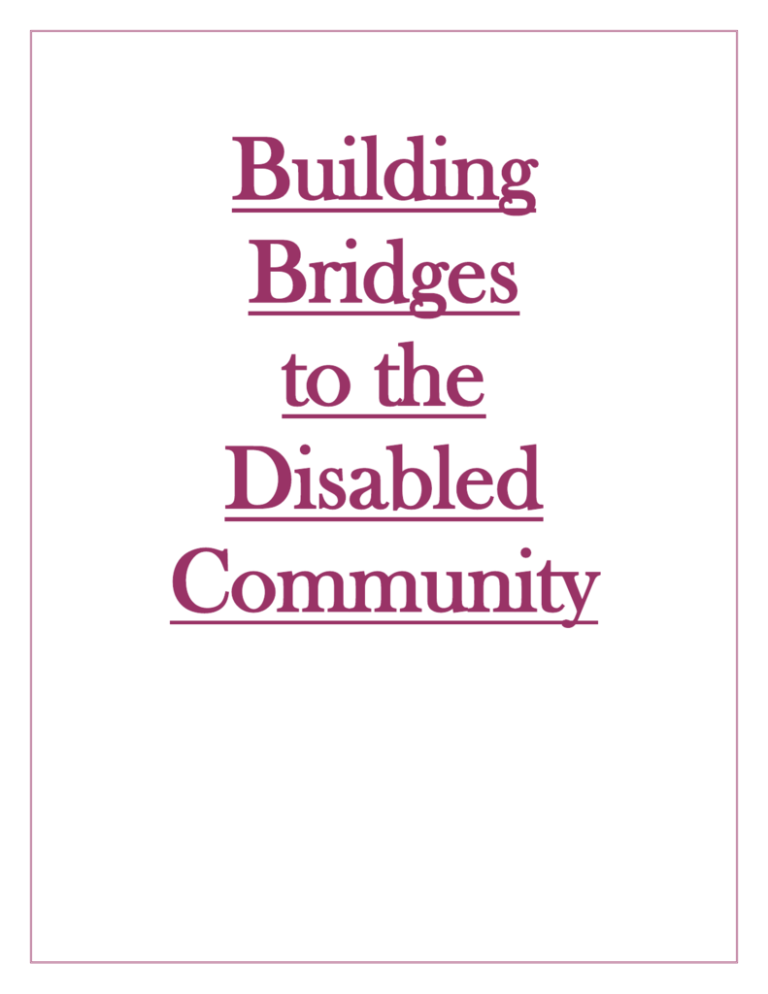
Building Bridges to the Disabled Community 1. First collaboration with Omni Behavioral Health Systems (1995) How to house pairs of mentally disabled adults effectively? How to best complete the requirements of federal regulation? Where were the best housing resources for these clients? 2. Agency contacted by the ARC of Anne Arundel County, Maryland (1996) Interested in small group home type programs utilizing Section 8 Thought it most effective to keep clients in general population Encouragement to consider revising strategies and addressing myriad of problems with the Section 8 program requirements. 3. Completed first Mainstream Application for Housing Services in 1997 This was a collaboration of assistance from OMNI and ARC, and a new partnership with the County Mental Health Agency The funding was limited and very competitive Basic design involved supportive services to be provided by partnering agencies after an action plan was developed Housing resources would be permanent 4. Received 100 Mainstream Vouchers with 24 other agencies HCAAC was awarded 100 Mainstream Vouchers, but many problems developed again Greatest issue was with live-in aide vs. bedroom size Grant monies were for vouchers, which were more expensive for the client than certificates. (Allowed for exception rents) 5. Re-organized the definition of family (to work better with disabled groups) This was a nightmare! HUD definition is very stringent, using discretion. PHA could use discretion in the “overall” definition of what encompassed a family HCAAC took the “loosest” interpretation to make this work 6. Offered to use PHA legal services to solve issues with ownership and power of attorney Utilizing units that were “partner owned and managed” How to redesign leases to work properly Who had financial control of client income? 7. Joined the Board of Supportive Housing Developers, Inc.(disabled housing advocates) To more clearly assist them in development of assisted housing for the mentally disabled To be involved in policy and procedure – from the property management perspective 8. Became an active participant in the Continuum of Care program in Anne Arundel County Consortium of 15 agencies that define the levels of care and assistance in the county Work as a unit to obtain additional funding sources for affordable housing for special needs populations 9. In 2000 submitted application for additional Mainstream Vouchers were unsuccessful in obtaining the grant remained determined to find other avenues for assistance 10. In 2001 submitted application via the Continuum of Care Funding for Permanent Housing programs for homeless and disabled families (25). specifically tailored for mentally and physically disabled clients who are homeless, or at the verge of homelessness. Provides permanent voucher assistance to clients Caseworker assigned to the client for duration of assistance 11. In 2001 established a Section 8 Homeownership committee to complete program design for homeownership. newest venture for the Housing Commission, targeting 50% of the homeownership vouchers to disabled families supportive services provided by OMNI, ARC, OPENING DOORS and Mental Health. 12. Maryland Association of Housing and Redevelopment Officials partners with State Task Force for Olmstead Decision. MAHRA has taken a keen interest in further assistance to the disabled client. The combined Task Force discusses and educates on valuable resources and effective housing techniques for the most critically disabled. Who should you talk to? Local Core Services Agency Local Department of Health and Mental Hygiene Local Association of Retarded Citizens (ARC) Local chapter of National Alliance for the Mentally Ill (NAMI). Look at the website www.tacinc.org Look at the website www.nami.org




